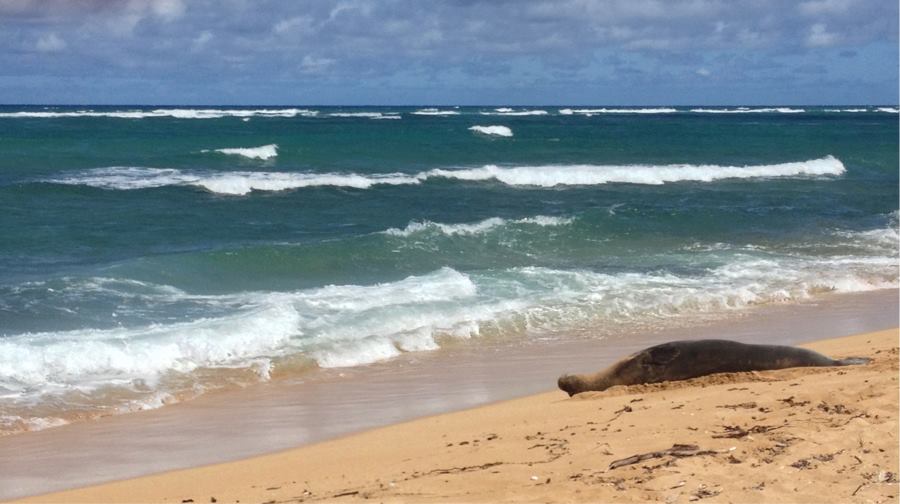COULD VACCINES BE A LIFEJACKET FOR STRUGGLING SEA CREATURES?
Vaccinations are a prickly topic these days. It seems to me that the anti-vax movement is spreading as rapidly as the viruses they’ve rudely wrenched out of retirement. For those that subscribe to science, though, there’s no denying that vaccines save lives. On land, at least. But what about the sea?
As measles returns to the stage for an encore, vaccines are wrapping up their underwater world premiere. They’ve been used in aquaculture to maximize salmon harvest for decades, but within the last few years, the tides have shifted. Oceanic inoculations are no longer reserved for boosting economics – they’re boosting endemics, too. Let’s pierce the skin surrounding the stories of two marine vaccine recipients – one feathered and one flippered.
First off, the albatross. And yes, this bird counts as a sea critter, as they spend most of their lives with water beneath their wings. The chicks must hatch on land of course, and despite their parents’ intrepid nature, hatching is often all they can muster – many perish from avian cholera before their immune system ever sets sail. For the endangered Amsterdam albatross population, which numbered only 92 adults in 2018, every chick counts. But thanks to the magic of vaccination (and the magic of needle-wielding field biologists), infant mortality has beak-dived. Scientists don’t know how long this immunity lasts, though, or if there will be an increase in long-term survival and reproduction rates until at least five years from now, after the current crop of chicks reaches adulthood.

Not an Amsterdam albatross (they were too rare for me to track down a photo), but this baby Northern royal albatross gives you a good idea of how fluffy and defenceless the chicks are. Sadly, even the most protective of parents can’t ward off pathogens. Photo by iNaturalist user John Barkla (CC-BY-NC)
Then there’s the matter of the endangered Hawaiian monk seal, a beach lounger I encountered in 2014 (documented in the grainy photo above). A year after I made this pinniped’s acquaintance, conservationists on Oahu started systematically inoculating the species against morbillivirus, a known seal killer that would lead to population collapse if there were ever to be an epidemic. Their game-plan was extremely well-thought out – they identified the adults with the most bustling social lives (and therefore the greatest capacity to spread disease) and designated them as “high priority seals.” With limited resources and the impossibility of capturing every single animal, herd immunity seemed like an attainable goal. But disaster struck in 2018 – now, bolstered against morbillivirus, monk seals are dying of toxoplasmosis instead. This insidious parasite lurks in the bowels of house-cats, leaks into the sea, and there’s no vaccine.
So, is it worth expending time and money on vaccinating wild marine animals when it’s unclear if the effort will pay off? If there’s even a pinprick of hope that it could help endangered endemic species, I’d say it’s worth a shot.
REFERENCES/FURTHER READING:
- Amsterdam Albatross (IUCN Red List of Threatened Species)
- A New Vaccine Protects Albatross Chicks (Hakai Magazine)
- Vaccination protects endangered albatross chicks against avian cholera (Conservation Letters)
- Hawaiian Monk Seal (IUCN Red List of Threatened Species)
- Vaccination Plan for Hawaiian Monk Seals: Summer/Fall 2016 (NOAA Fisheries)
- How the Tiniest of Parasites is Taking Down the Mightiest of Monk Seals (Smithsonian Magazine)
- Protozoal-related mortalities in endangered Hawaiian monk seals Neomonachus schauinslandi (Disease of Aquatic Organisms)
